Is Pay-To-Play Fly Fishing Good For Anybody?
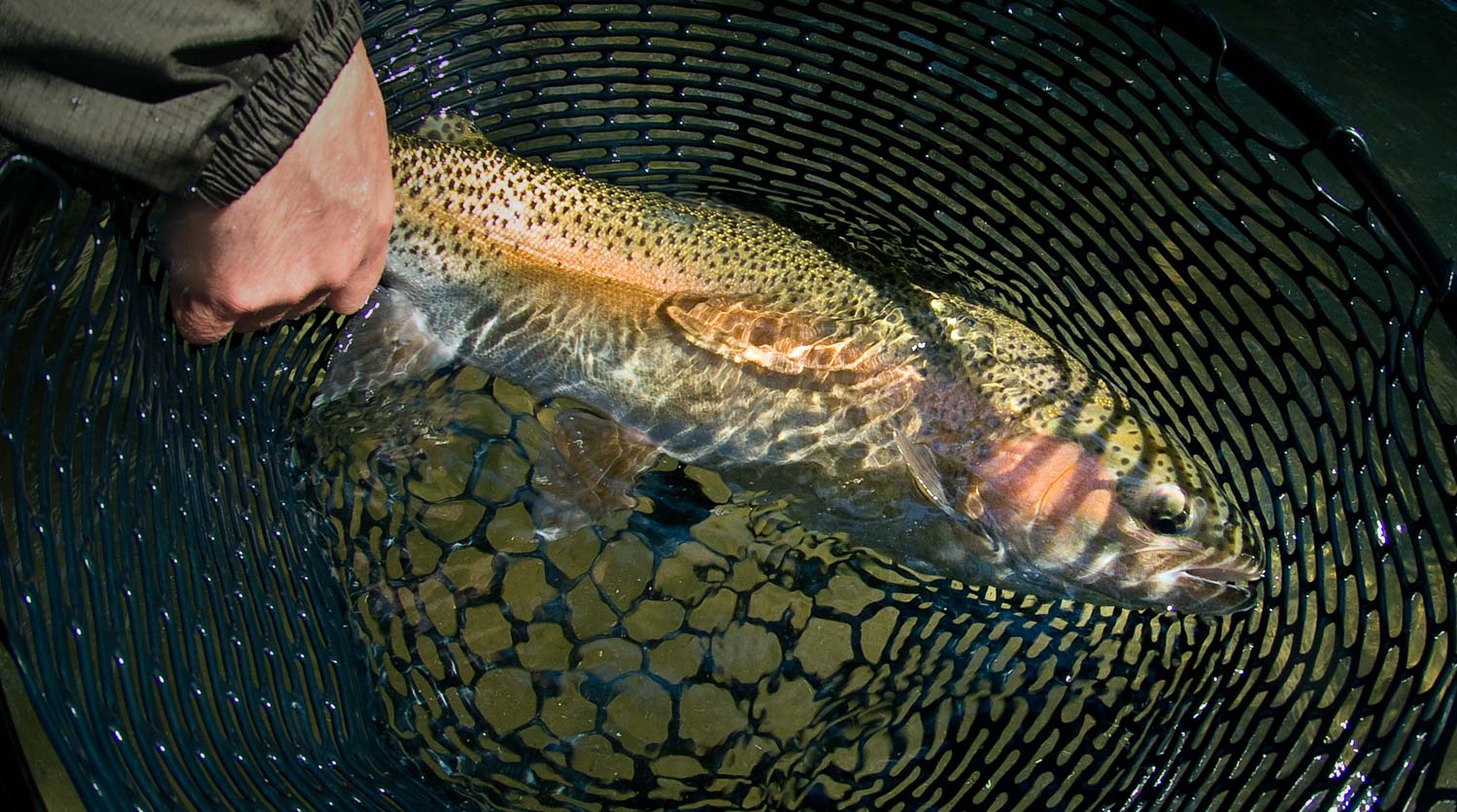
By Louis Cahill
If you pay hundreds of dollars for the chance to catch a really big trout on someones private water, are you doing the right thing?
Pay-to-play fishing is a hot button issue. It came up in conversation the other day so I thought I’d put my two cents in. I don’t have any data to back this up, but my guess is that a pretty small percentage of anglers regularly pay to fish private water. I’d guess that a fare number of us do it a time or two and move on and a very small number do little else. On the other hand there are an equally small number who would never consider it.
What you figure out pretty quickly is, whenever pay-to-play comes up, there’s going to be an argument. The fur usually starts to fly when fish size becomes the topic. If you are boasting about catching a trophy size trout on your local pay-to-play water you’re very likely going to hear how, “That fish doesn’t count,” or how, “That’s bullshit.”
It’s true that there is no comparing a hand fed pet to a wild fish of the same size. Perhaps there is no comparing the effort or skill that went into catching those fish, but there is certainly no comparing how unique, special or important those two fish are. Wild trophy size trout are a treasure and should be treated as such. All of that said, if you are boasting about the size of your fish to establish yourself as a superior angler, you’re probably a douche bag. If you’re trying to spoil someone else’s excitement by calling their fish bullshit, you’re just as bad. That’s my opinion.
Focusing on numbers or size takes the fun out of fishing for me. I don’t count fish and when I do measure a fish it’s about appreciating what a special fish it is and how fortunate I was to catch it. Not for one instant do I hold to the idea that it makes me special as an angler. I’ve been at this long enough to know that humility is waiting in the next run. I like to hear anglers talk about special fish and I like to talk about them too. I think that’s something we all share, I just think it sucks when it ends in an argument.
SO HERE ARE SOME FACTS ABOUT PAY-TO-PLAY FISHING.
Read More »What’s in a net?
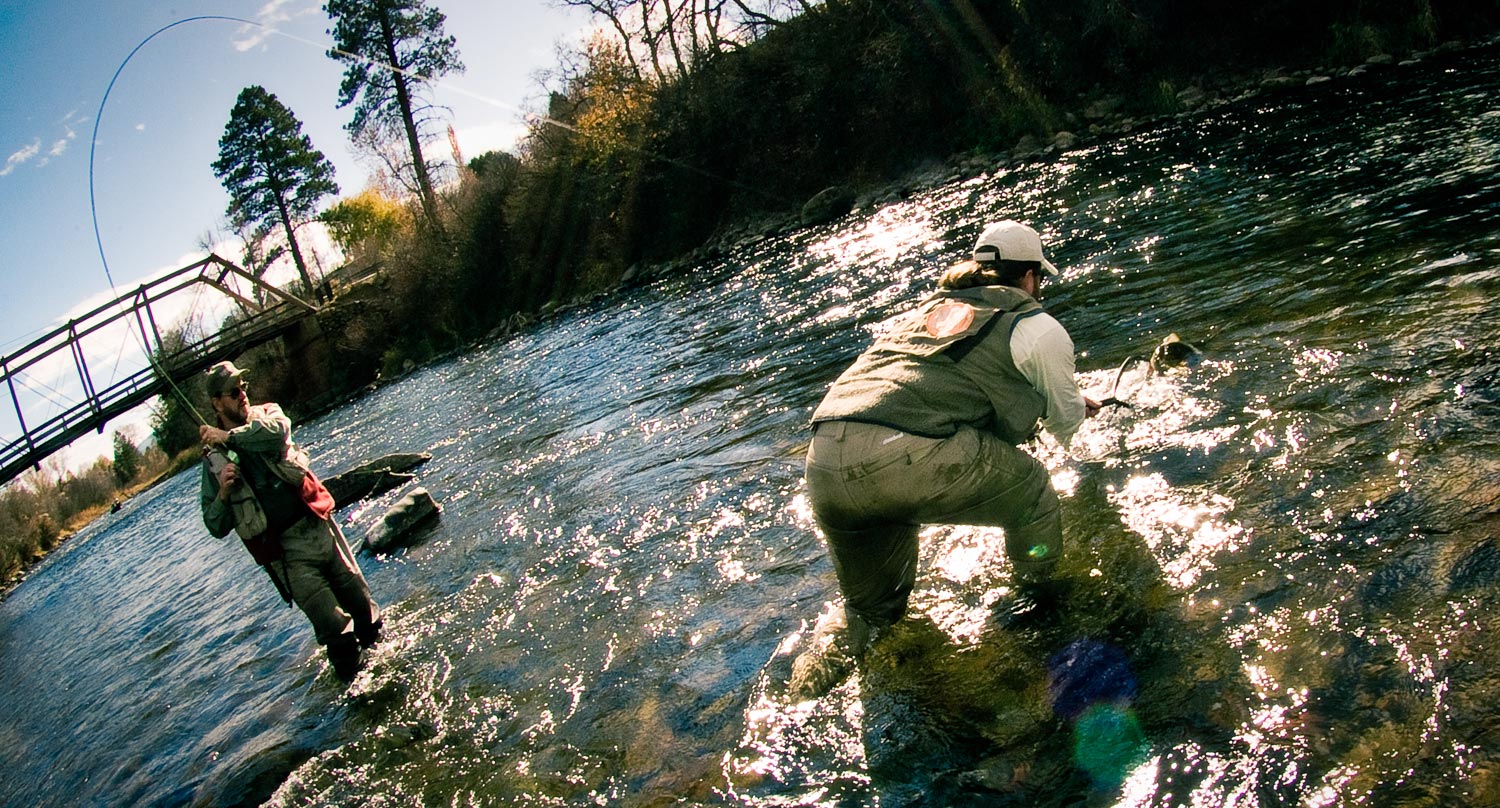
By Justin Pickett
My indicator drops below the turbulent surface and my rod bends over as I come tight to a nice rainbow trout.
Her initial reaction took her further into the head of the deep run, shaking her head violently in an attempt to escape the grasp of my hook. As this trout began to hunker down in the current, I applied some low, downstream side pressure, which she didn’t like at all. Suddenly, like a bolt of lightning, she darted downstream, leaving me in the rear-view with zero intentions of returning.
I was fishing with my buddy, Blake, who is new to fly fishing. This was the first fish that he had seen on a hot, downstream run. As this rainbow steadily peeled line from my reel, I looked over at Blake and instructed him to grab the net and get after it, but just as Blake began making his move downstream this trout shot through a small chute with several branches that hung just above the current on the opposite bank. As I reeled down to keep up, I waded my way towards the obstacle that I was sure was going to end this fight. I had my buddy come to the downstream side of the chute so I could pass my rod under and through the branches. After successfully making it through all the foliage without breaking off, I let Blake take over the fight.
I grabbed the net and hit the bank running so I could gain some ground on this crazy trout. About thirty yards later, I finally made it well downstream of her and stepped further into the water. I knew if I could get in front of her, then I would likely turn her back upstream and stop this crazy train. With her head now turned back upstream, and, seemingly, calmer, we were able to play this fish into the net quite easily. No doubt, this fish was likely as worn out as we were after all that!
Fast forward a couple of days and I found myself having a conversation with Louis about anglers who feel that if they themselves don’t net their own fish, then they consider that catch “incomplete”. It’s as if they feel the need to put an asterisk by that memory because they either asked for, or received, assistance to land a fish.
While I can certainly respect these anglers’ stance on the matter, for me, it doesn’t take away from my experience. Am I always going to have someone net a fish for me? Well no, but it will also always depend on the situation at hand. I’m not going to have someone net a native brook trout for me, but, in my opinion, there are times when having a good net man is beneficial to both angler and fish. In reference to the scenario above, if I
Read More »Which Fly Rod Action Is Best For You?

By Kyle Wilkinson
How does the angler know what fly rod action will best suite their needs and casting style?
If you’re an experienced angler reading this you may already know the answer to the topic of today’s discussion. However, I have a strong feeling many people reading this don’t fall into that category and have on more than one occasion heard the term “fast action” or “medium action” and thought to themselves, ‘What in the hell? All I want is a fly rod I can take to the river and catch a fish with!’
If you’ve ever found yourself in that situation — or if you’re in the market for a new fly rod but don’t know what makes the most sense to add to your line up — then I highly encourage you to read on!
It’s no secret that fly rods come in all shapes and sizes these days and with the continued advancements we’re seeing in rod building technologies, the corresponding actions are getting more and more refined. This can be confusing to interpret for any angler out there, regardless of skill.
But back to the question of which action is right for you? In my opinion, the short answer to this is simply going to depend on the type of fishing conditions you’re going to be facing. Now I’m sure some of you are already thinking that both angler skill and angler preference are major factors as well and you’re correct — I’ll be sure to touch on this as well.
For the sake of keeping things simple though, let’s take a 10,000-foot view of this topic and break fly rods down into the three most dominant categories (slow, medium, fast) and where I find their most useful applications to be.
Slow Action. It seems most rod companies tend to shy away from the phrase ‘slow action’ these days and use terms such as ‘full flex’ or ‘presentation taper’ to categorize these type of rods. Additionally, you’re usually going to see these rods predominantly offered in sub 9’ lengths, with rods down to 6’ long not out of the question. To the newer angler, the first thing you’ll likely notice when picking up a slow/full flex rod is that
Read More »Bonefish — Getting into the game
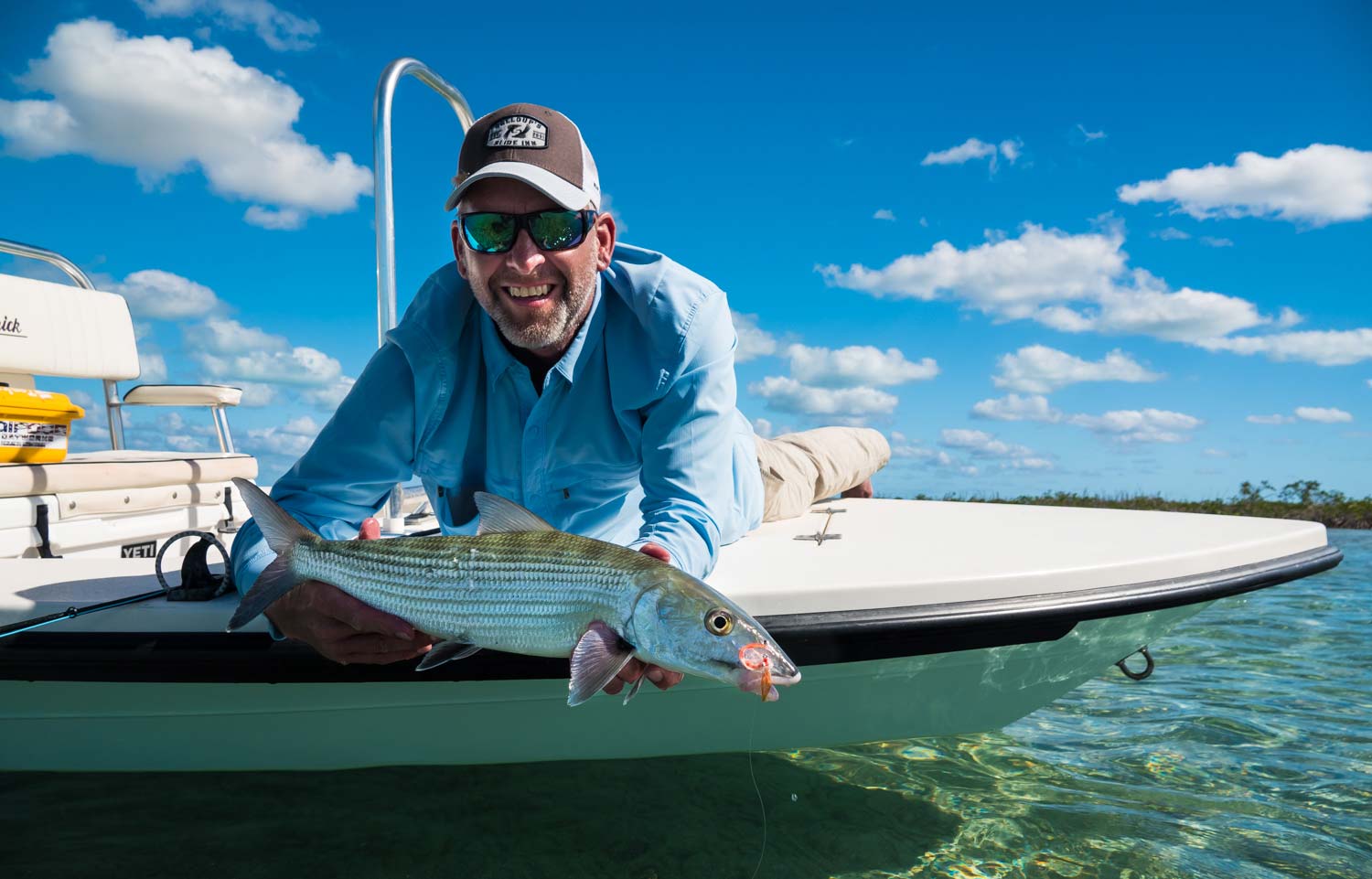
by John Byron
You’re giving thought to going on your first bonefish expedition, but you want more information.
You’re in luck — there’s a ton of great advice out there from true experts.
But much of that super info is geared to someone already in the game who wants to do better.
Let me approach the topic from the opposite direction, that of the true beginner, which I was four years ago and largely still am.
In a previous blog posting here, I gave you a flats-level view of the subject in A Beginner’s Guide to Catching Bonefish.
Here’s my take on the topic at Angels Twenty, the picture seen from 20,000 feet: what are the true basics for someone considering their first bonefish adventure?
Destination: The first question is where to go.
The Bahamas are the most accessible for most people.
Which island to go to deserves research, but they all provide pretty good fishing.
The Keys and Hawaii have big fish, but it’s advanced-level fishing and not good for a first-timer.
Belize has lots and lots of fish, but they tend to run a bit smaller than other places.
More exotic destinations — e.g., Christmas Island; the Seychelles — are great fishing, but they’re pretty daunting as a starting place.
Ease of travel will enter into your considerations.
When: What time of year.
As always, the best time to go fishing is when you can.
But you have to consider the hurricane season; it’s a crapshoot, plus many operations close then.
And a cold front in winter can affect the fishing in the more northern Bahamas destinations (though with bigger fish in the offing too).
Accommodations: Gotta eat and sleep somewhere.
Easiest access to the sport is a hosted “bonefish school.”
Gink & Gasoline; Orvis.
All arrangements made except travel to/from.
Expert help from the host and from guides geared to those new to the sport.
Nice chow, sleeping, amenities.
Next easiest is a trip put together by one of the outfits that packages fishing trips.
Nervous Waters, Deneki, H2O Bonefishing, The Fly Shop, Yellow Dog, others.
Most difficult is the do-it-yourself trip.
Attractive if you’re pinching pennies.
But odds of getting skunked and frustrated as a newcomer are pretty high.
Trip Duration: How much time will your first trip for bonefish take?
4 Tips For Capturing Better Release Shots of Your Fish
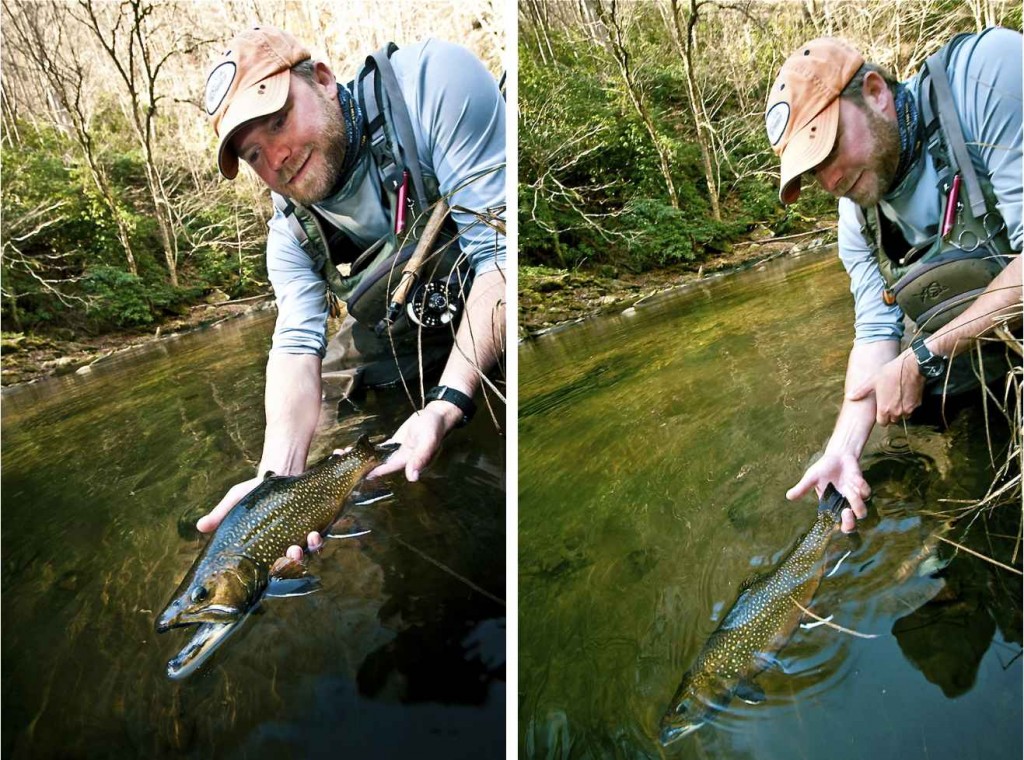
Your best shot at capturing a good photograph of you and your catch, is first having someone along with you that’s competent with a camera in their hands.
But even a world class photographer will tell you, it’s extremely difficult getting those picture perfect photographs, if the person handling the fish has no clue what their doing. Some of my favorite fly fishing shots to look at are catch and release shots, because there seems to be something extra moving about capturing the release of a fish in a photograph. Problem is, release shots are often some of the hardest photographs to pull off on the water. You have to have satisfactory light and adequate water clarity, but even with both of those, much of your success will ultimately be determined by the cooperation of the fish your shooting. Below are four tips for capturing better release shots that Louis and I have learned through trial and error over the years. Followed correctly, they should increase your chances at getting that perfect catch and release shot.
Tip 1: Choose a Calm Stretch of Water for the Release When Possible
Fast moving water isn’t optimal. If you can find a nice eddy or a calm stretch of water close by, you’ll find it much easier to photograph a nice release shot. In most cases, slower moving water will provide you with better water clarity for showcasing the fish below the surface during the release. I’ve also found it’s much easier to handle and keep the fish in proper position in slower moving water.
Tip 2: Keep Your Catch Calm and Relaxed
Don’t be in a rush to get the shot. Keep the fish in the water and in the net until it has calmed down before you move forward with the release shot. This is especially true if you land the fish quickly. A hot fish generally will swim off so fast, it will be
A Tight Line Presentation is Key in Saltwater Fly Fishing

SLACK IS NOT YOUR FRIEND.
When fly fishing in saltwater, keeping the slack out of the system is job one. Slack can cause missed fish, long distance release and even refusals. A tight line is key at every stage of the process, but many anglers overlook the initial presentation.
Triggering a fish’s instinct to strike relies on the fly having a lifelike action when the fish first catches sight of it. That means that the fly should move in the manner of the prey it represents from the instant it hits the water. In most cases that cannot be accomplished with slack in the system. Even, or maybe especially, when fishing crab patterns where the natural action is the fall to the bottom, slack kills. These flies are often eaten as soon as they hit the water and if the line has slack, you will never know it.
There is nothing more important to success in saltwater fly fishing than a tight line presentation, but it’s not an easy thing to pull off. Here are some tips and a video to help you get the slack out.
Read More »Low Flows
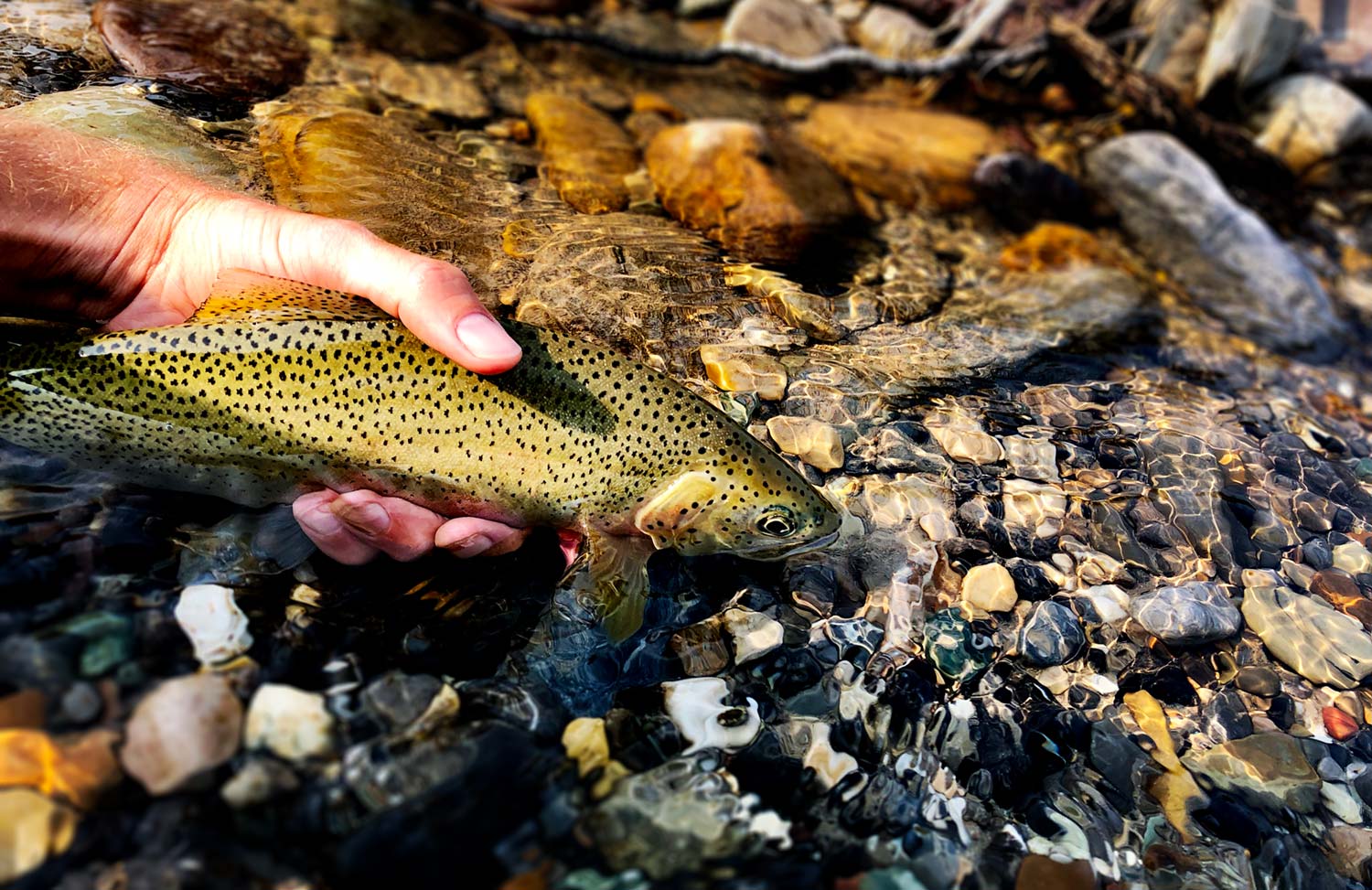
By Jesse Lowry
Late summer out here in the Kootenay’s of British Columbia means hot days and low flows.
Despite the recent heat wave, water temperatures this year managed to stay in safe ranges thanks to a solid snow pack in the alpine. These type of conditions are some of my favourite to be out on the water. It’s still safe for the fish, as the rivers are hanging well below 20c (68f in Murica). The weather’s fantastic, a lot of the rivers are too boney to float, which reduces pressure, makes wading across the entire river a breeze, and you can cover a lot more river on foot as a result.
These western freestone rivers tend to get pretty channelized this time of year, which you would think concentrates the fish into smaller more obvious areas and it does, but that doesn’t necessarily translate into making them easier to catch. Log jams, downed trees, tight deep corners with tricky currents and all sorts of obstacles that make clean drifts a tall order, are where the fish tend to hang out. If you want to catch them you’ve got to put your fly into some sketchy places, and a lot of the time they aren’t coming back out. Losing flies out here is just part of the game, and if you’re not losing them, chances are you’re not fishing some of the best water…. or you’re a Jedi.
I also tend to lose more flies as I do something a little different with my leader/tippet. I use lighter tippet than I typically would and I don’t make a smooth transition as I don’t actually want my fly to turn over completely. In these situations I want the tippet to pile when it lands, so I can get that extra foot or two of clean drift which can make the difference in these tight conditions. To achieve this, I tie my tippet to a thicker leader (i.e., 5x tippet to a 3x leader) to create a bit of a hinge point. A bit of curl in the tippet helps as well. Also throwing a size 8 hopper on 5x adds to this tippet pile, as the 5x has trouble transferring enough energy to turn a chunkier fly over. This way when you get to the end of your drift, the piled tippet and your fly can continue to go with the flow for a little bit longer and maybe get you into that pocket deep in the rhubarb where the big guys hang out.
As well, another added benefit with piled tippet is that your fly
Read More »Reach, Don’t Rip!
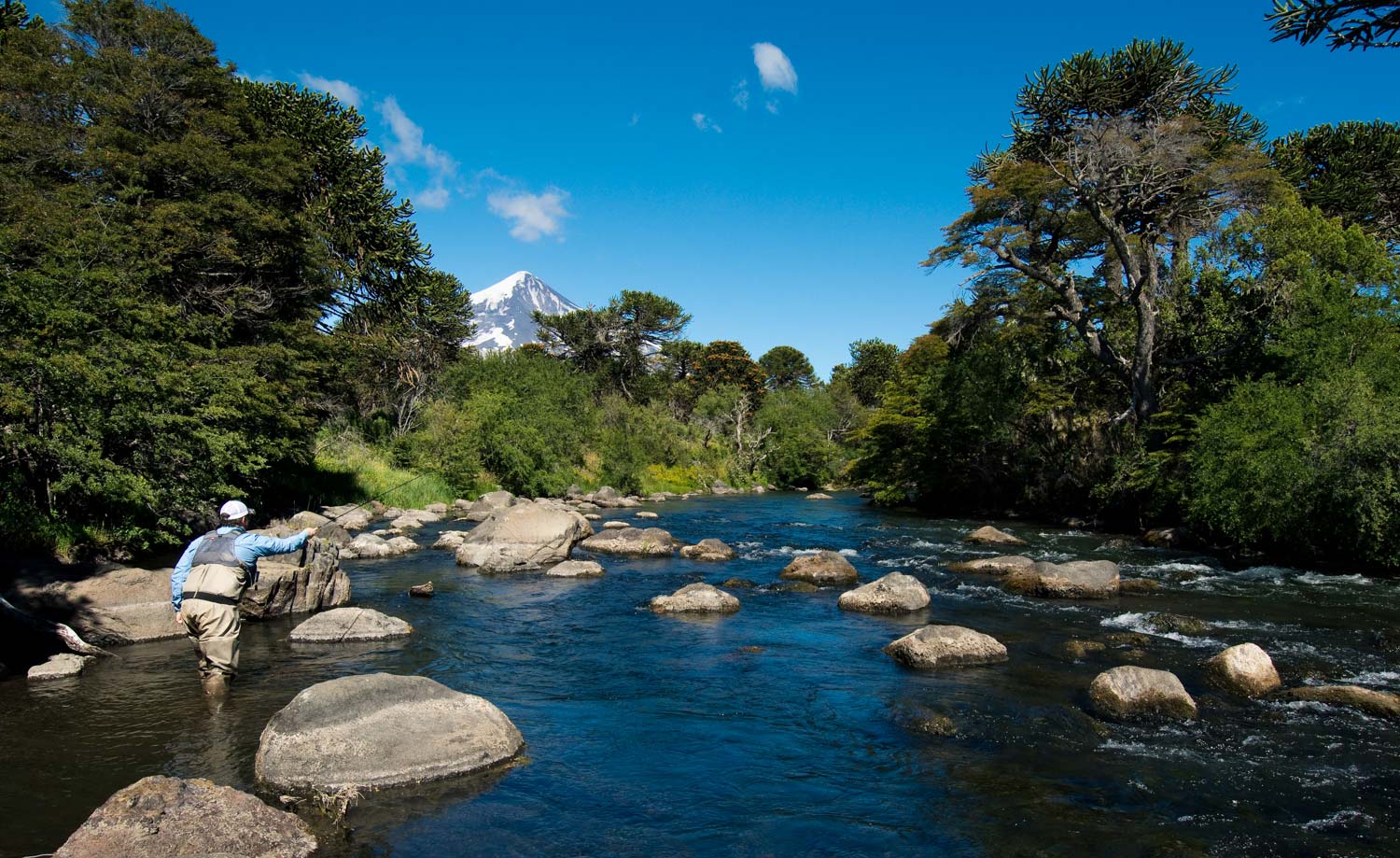
One of the most common areas of needed improvement that I see with many anglers is line management.
In fly fishing, line management is a big piece of the puzzle, and to be consistently successful you must improve upon these skills and develop good habits. One particularly bad habit that I see more than any other when I’m on the water with clients and other anglers is having an unnecessary amount of line stripped off the reel. This is problematic for numerous reasons.
One obvious reason is that your fly line could become entangled while fighting a fish and cause you to lose a fish. Laying a ton of line on the ground invites a host of gremlins to grab on and ruin your efforts. Most trout lines are also very supple and thin, making them even more prone to tangle and knot up when being taken from the ground quickly, whether it be a fish on the run or from the act of shooting line. Fly line left on the ground, or even in the water, also lends itself to damage. You can easily shred a fly line and even cut through a line by stepping on it. I’ve had one of my lines severed in half when a client of mine wearing aluminum barred boots stepped on it, leaving that rig useless until we stopped to grab another reel. Dirt and grime also loves to stick to fly lines, especially textured lines, which will greatly hinder your fly line’s ability to float effectively on the water’s surface. Problems, problems, problems.
Often, a situation doesn’t call for more fly line, but rather for the angler to get out of their “box”.
For example, there was a morning I was setting up a client to make the first presentation of the day, which required about a thirty-foot cast. Nothing crazy. As he set his feet and prepared for his cast, I turned to pull my net from my pack in an act of optimism. As I did this all I could hear was the sound of the intermittent outgoing clicks of the drag on his reel. A lot of them. When I turned back to him,
Read More »Three Tips for Casting in the Wind
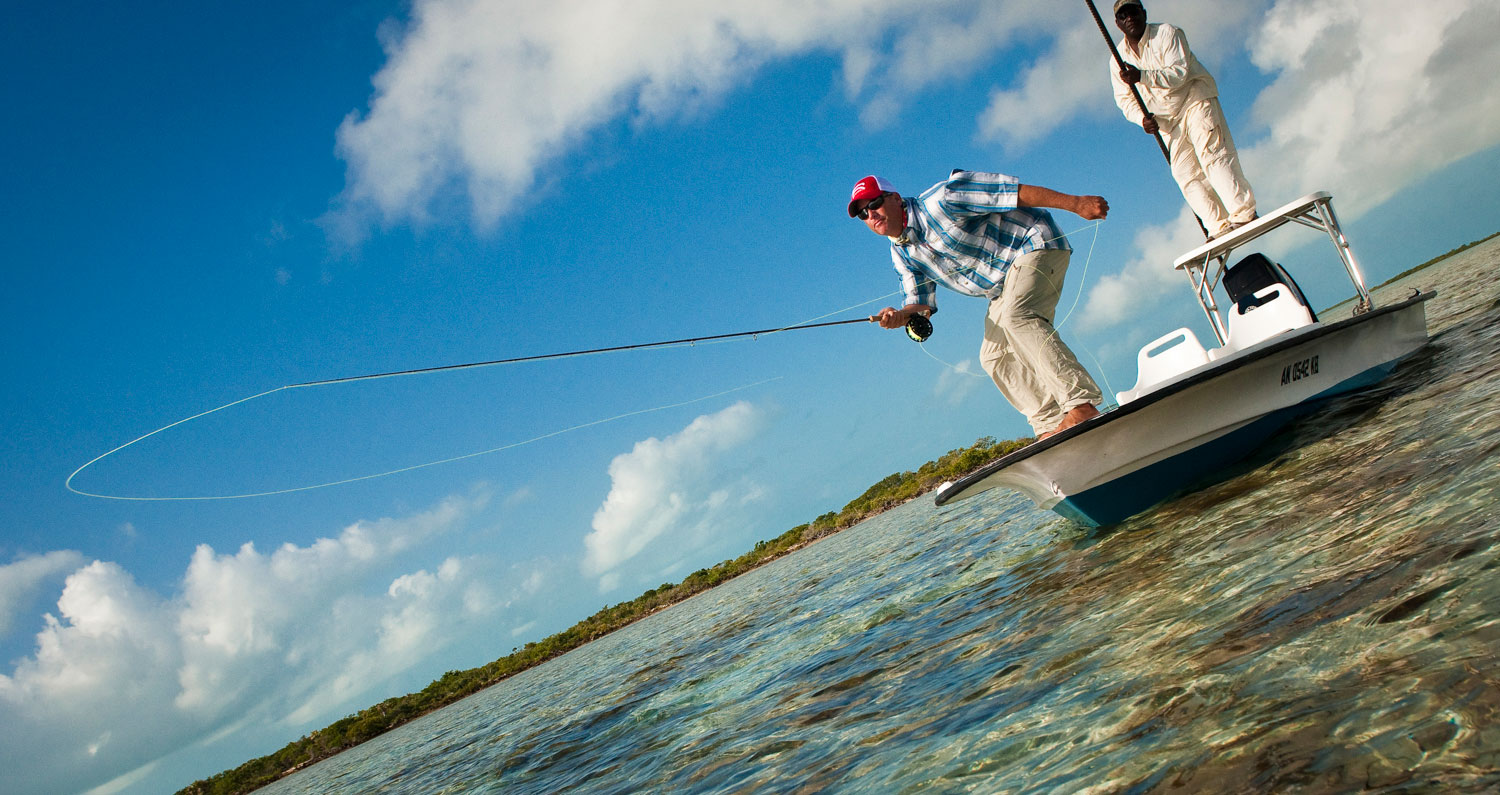
By Bruce Chard
WHEN YOU’RE FLY FISHING IN SALTWATER THERE IS ALMOST ALWAYS WIND.
Saltwater fly fishing demands your A-game. Your presentations have to be spot on and when the wind is howling, it will test your angling mettle. If you’re new to the game, it’s intimidating but having and practicing the right skills can give you the confidence you need to deliver.
Here are three tips that will help you tame the wind
Make tight loops
Having the ability to form tight loops while casting in the salt will help in many ways.
Tight Loops help:
•Control line in the air for better accuracy
•Increase line speed
•Reduce slack in the line during casting and presentation
•Increase distance
•Fight the wind
•Lay your leader and fly out straight with no slack
Whether you are wading or in the skiff, a tight loop is vital to success in the salt. To form a tight loop you need to do the following:
•Keep your rod tip traveling
Read More »Build Your Own Fly Rod: DIY Video 4
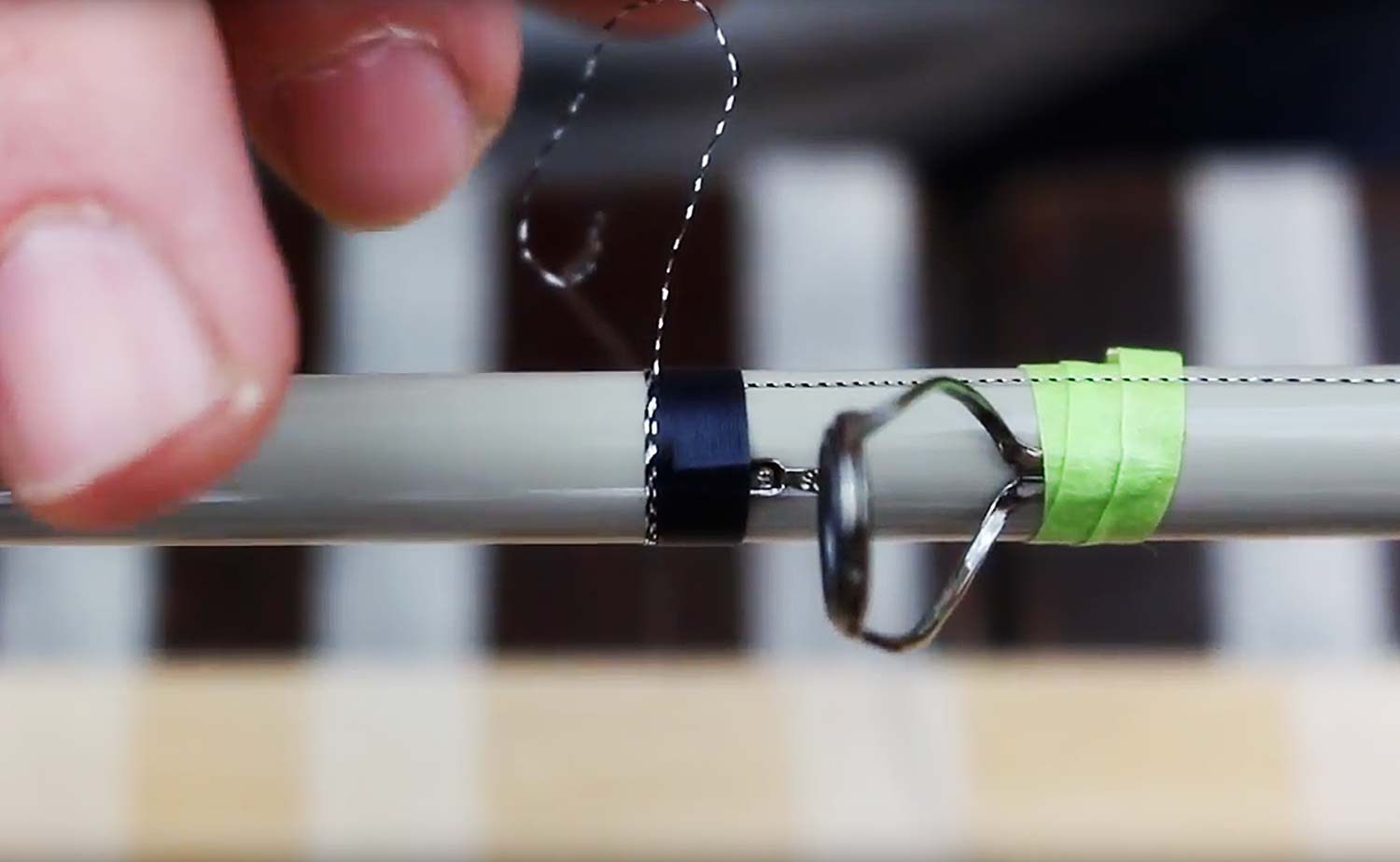
It’s rod building time with Matt Draft of Proof Fly Fishing.
In this installment, video 4, Matt will cover wrapping the ferrules, stripping guide and hook keeper. In addition to the basics Matt will share some pro tips for the trickier steps in the process. Our DIY rod is really starting to look like something now!
Check out Matt’s site, Proof Fly Fishing. As a special thank you to G&G readers, Matt will be offering free shipping on all of his kits for the next seven weeks. Just use the code G&Gfreeship on his web site.
BUILD YOUR OWN FLY ROD: DIY VIDEO 4: WRAPPING THE FERRULES, STRIPPING GUIDE AND HOOK KEEPER.
Read More »